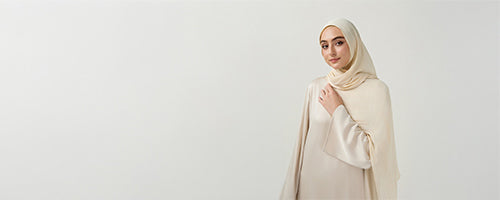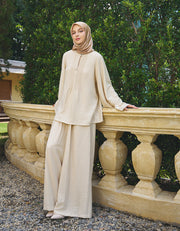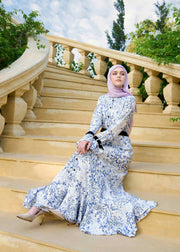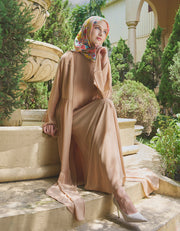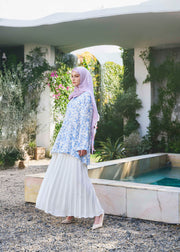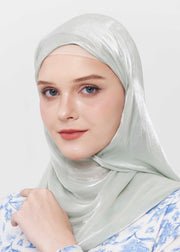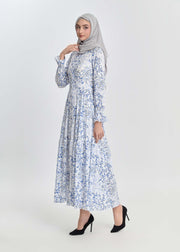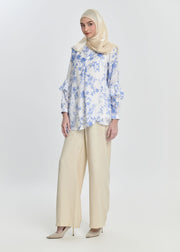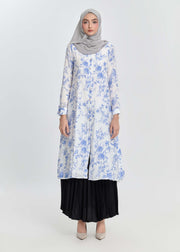Textile Trends: Prints and Fabrics in Islamic Fashion 2025
As modestwear continues to evolve, 2025 is set to mark a new chapter for Islamic fashion. Beyond silhouettes and color palettes, textiles and prints are now at the heart of design innovation. The fabrics chosen for abayas, hijabs, and modest dresses not only reflect cultural heritage but also signal a shift toward sustainability, technology, and individuality.
This year’s textile trends Islamic fashion reveal how global influences, modern materials, and traditional values blend seamlessly — creating garments that are as meaningful as they are beautiful.
The Growing Role of Textiles in Islamic Fashion
For decades, Islamic fashion has emphasized modesty through design and layering. But now, fabric choice has become equally important in defining a woman’s personal style.
Textiles are no longer just the foundation — they are the storytellers of the outfit. The material’s texture, weave, and print communicate cultural roots, lifestyle preferences, and even environmental values. In 2025, textile trends Islamic fashion will focus on authenticity, craftsmanship, and conscious design.

The Growing Role of Textiles in Islamic Fashion
1. Sustainable Fabrics Take Center Stage
Sustainability continues to dominate conversations in global fashion, and Islamic fashion is embracing this movement with open arms. Muslim women increasingly seek modest pieces that align with their values of care and responsibility.
Top sustainable fabrics in 2025 include:
-
Organic cotton: Breathable, soft, and free from harmful chemicals.
-
Bamboo viscose: Naturally antibacterial and eco-friendly.
-
Recycled polyester: Created from post-consumer waste, ideal for lightweight abayas.
-
Tencel and lyocell blends: Smooth, durable, and perfect for elegant layering.
These materials reduce waste and promote ethical consumption — ensuring that modesty extends beyond appearance to include moral integrity.
2. Prints with Meaning: The Rise of Cultural Storytelling
Prints are becoming bolder and more symbolic in Islamic fashion. 2025 sees designers experimenting with patterns inspired by traditional motifs such as Arabesque geometry, Turkish tilework, and Moroccan mosaics.
-
Geometric motifs symbolize unity and balance — key values in Islamic art.
-
Floral patterns express femininity and renewal, often seen on chiffon hijabs and dresses.
-
Abstract prints bring a modern, global touch to classic abayas.
These designs connect wearers to their heritage while keeping the look contemporary. The textile trends Islamic fashion movement isn’t about reinventing modesty — it’s about reinterpreting it for today’s world.

Prints with Meaning: The Rise of Cultural Storytelling
3. The Return of Luxurious Fabrics
While minimalism has dominated modestwear for years, 2025 introduces a renewed love for luxury. Designers are revisiting opulent fabrics such as:
-
Silk and satin: For evening abayas and formal jilbabs.
-
Velvet: Perfect for winter collections and occasion wear.
-
Jacquard and brocade: Featuring rich woven textures that exude timeless elegance.
Luxury doesn’t mean extravagance — it’s about refinement and craftsmanship. These fabrics highlight how modest fashion can remain glamorous yet dignified.\

The Return of Luxurious Fabrics
4. Innovative Textiles and Smart Fabrics
Technology is shaping the next wave of textile trends Islamic fashion. Smart textiles and performance materials are being used to improve comfort and functionality without compromising modesty.
Examples include:
-
Cooling fabrics for summer abayas that regulate body temperature.
-
Wrinkle-resistant weaves for travel-friendly modest wear.
-
Stretch-infused blends that provide comfort while maintaining structure.
These innovations reflect the modern Muslim woman’s lifestyle — dynamic, professional, and style-conscious.
5. The Rise of Minimalist and Neutral Color Palettes
In 2025, modest fashion embraces quiet luxury — focusing on texture and tone rather than bold contrast. Neutral colors such as beige, sand, olive, and soft rose dominate fabric choices.
Combined with the right textile — whether chiffon, crepe, or linen — these shades create a sophisticated aesthetic that resonates with both traditional and contemporary wearers. The result is Islamic fashion that feels timeless and globally appealing.
6. Texture as the New Statement
Another defining feature of 2025’s textile trends Islamic fashion is the emphasis on tactile experiences. Textured fabrics like crinkle crepe, ribbed cotton, and embossed satin give modest outfits depth and personality.
These subtle surface details add richness without relying on heavy embellishment. They also photograph beautifully — an important consideration for modest fashion influencers who bring Islamic design into the digital spotlight.
Conclusion: The Future of Textiles in Islamic Fashion
From eco-friendly materials to digitally inspired prints, the future of Islamic fashion lies in the hands of textile innovation. Each thread carries a message — one of identity, faith, and creativity.
As textile trends Islamic fashion evolve, they show that modestwear can be both ethical and expressive, rooted in tradition yet forward-looking. Whether through the softness of bamboo viscose, the intricacy of brocade, or the fluidity of chiffon, fabrics continue to define how modesty meets modernity.
For those seeking refined, trend-forward modest outfits crafted from quality textiles, explore the collections at Minnaba — where every fabric tells a story of grace, faith, and enduring style.

